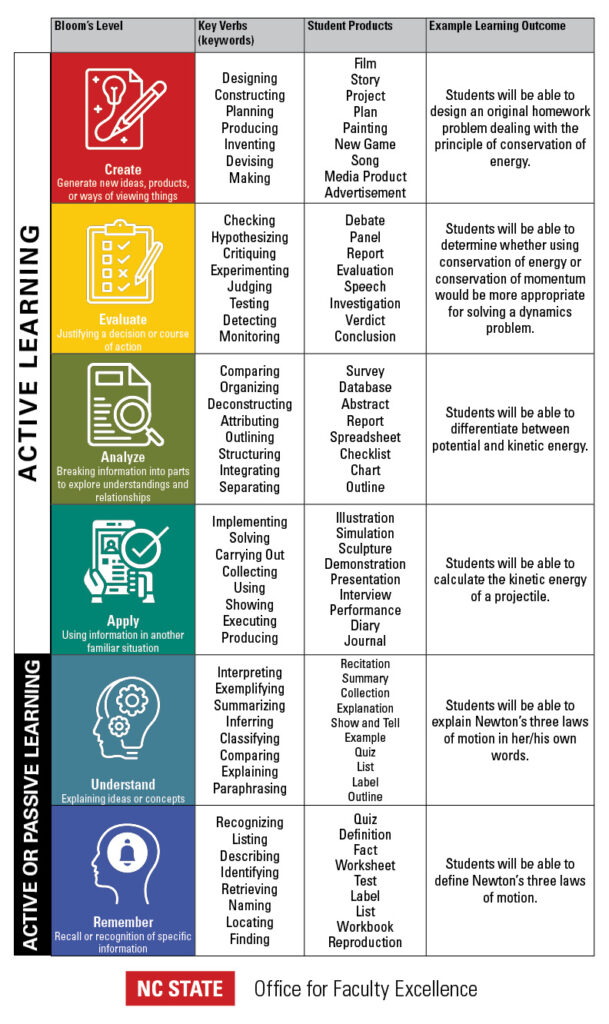Bloom’s Taxonomy
What is Bloom’s Taxonomy?
Bloom’s Taxonomy is a classification of the different outcomes and skills that educators set for their students (learning outcomes). The taxonomy was proposed in 1956 by Benjamin Bloom, an educational psychologist at the University of Chicago. The framework was revised in 2001 by Lorin Anderson and David Krathwohl, yielding the form that we commonly see today; it can be used to create assessments, evaluate the complexity of assignments, increase the rigor of a lesson, simplify an activity to help personalize learning, design a summative assessment, plan project-based learning, frame a group discussion, and more. Because it simply provides an order for cognitive behaviors, it can be applied to almost anything.
There are many published “verb tables” to help identify which action verbs align with each level in Bloom’s Taxonomy. Our version is below or you can download a PDF here. You may notice that some of these verbs on the table are associated with multiple Bloom’s Taxonomy levels. These “multilevel-verbs” are actions that could apply to different activities. For example, you could have an outcome that states “At the end of this lesson, students will be able to explain the difference between H2O and OH-.” This would be an understanding level outcome. However, if you wanted the students to be able to “…explain the shift in the chemical structure of water throughout its various phases.” This would be an analyzing level verb.
Adding to this confusion, you can locate Bloom’s verb charts that will list verbs at levels different from what we list below. Just keep in mind that it is the skill, action or activity that students will perform using that verb that determines the Bloom’s Taxonomy level.

Resources adapted from:
https://www.utica.edu/academic/Assessment/new/Bloom%20tx%20revised%20combined.pdf